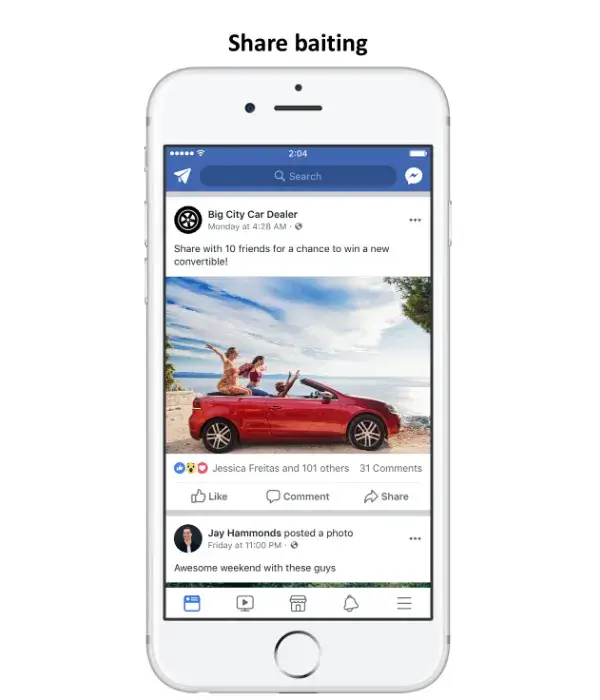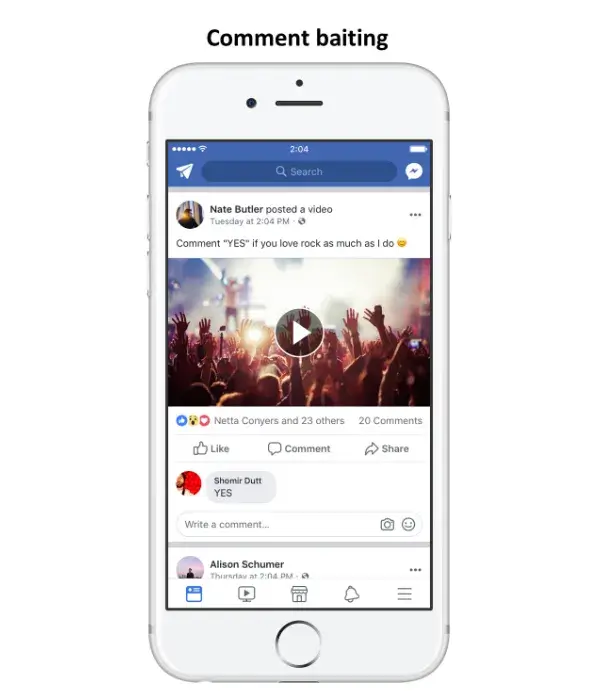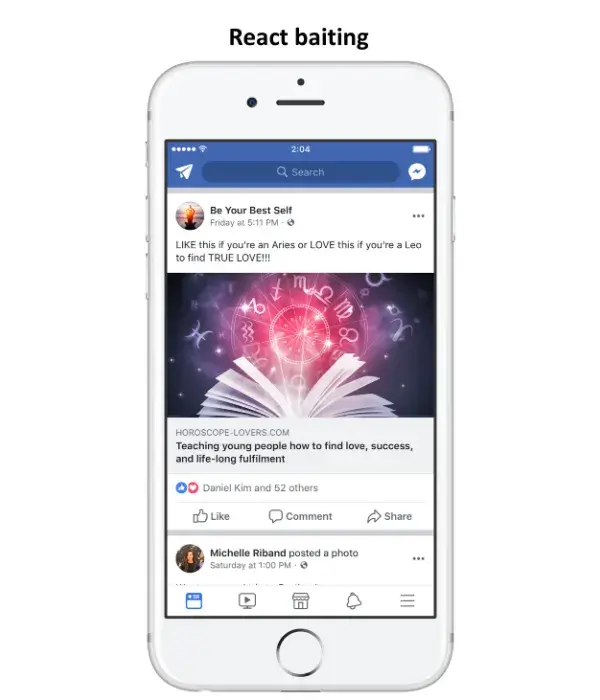Summary
Everything you need to know about shadowbans on Facebook, Instagram, Twitter, YouTube, and TikTok — and how to prevent it from happening to you.
You will learn
- Why online platforms shadowban users
- How Facebook, Instagram, Twitter, YouTube, and TikTok deal with shadowbanning
- How to make sure your content is in the clear
‘Shadowban’: a term used by everyone from influencers to conspiracy theorists — and it’s enough to strike fear into the hearts of many a social media manager or content creator.
While the practice has developed an almost mythical status in social media marketing, it’s a pretty straightforward concept. And thankfully, relatively easy to avoid.
Let’s unpack everything you need to know about shadowbans: What’s actually behind the mysterious term, its history, how it has reared its head on certain platforms, and — most importantly — how to prevent it from happening to you.
What is shadowbanning?
Shadowbanning is the act of muting a user or their content on a platform without informing them.
While the term shadowban is pretty new, the practice of hiding participants online without telling them long predates it. Over the years, it's had many names: stealth banning, hellbanning, ghost banning, being "sent to coventry," comment ghosting, and my particular favorite: toading.
While it may seem sinister, it’s pretty practical when you consider it from a moderator's point of view. After all, when you remove trolls from an online platform and let them know, there’s nothing to stop them from creating another account and starting right back up with the behavior that got them banned in the first place. But if you quietly mute their rule-breaking content, said trolls are free to shout into the void without harming other users.
Still, the idea that your content can be throttled by a platform is rather unpleasant — and the fact that you could have no clue that it’s happening makes it even worse, Jonathan Zittrain, a professor of computer science and law at Harvard University, told the New York Times.
“Shadowbanning is the worry by any user that they are howling into the void, that they have been placed in a bubble and it’s undisclosed.”
A brief history of shadowbanning
Forgive this nerd for taking a quick meander into the archives — the history of the term shadowban is just too interesting not to feature in this article.
As I mentioned earlier, the term itself is not that new: The New York Times reckons ‘shadowban’ dates back to at least 2012 when Reddit users accused the platform of banning a link to a Gawker article about transparency.
VICE disagrees, attributing the origin of shadowbanning to the controversial comedy website Something Awful (SA), a sprawling collection of blogs, message boards, and forums. This wouldn’t be surprising, given SA, which has been around since 1999, is credited with the creation of many Internet terms, including ‘spoiler alert,’ ‘let's play,’ and ‘AMA’ (Ask Me Anything).
Toading was the act of metaphorically turning someone into a 'toad' as a punitive measure
The practice of shadowbanning is another story. VICE traces the concept all the way back to the practice of ‘toading,’ which has been around — I kid you not — since the 70s. This was on multi-user domains (MUDs), text-based chat rooms that allowed players to take part in Dungeons and Dragon-esque games.
Toading was “the act of metaphorically turning someone into a 'toad' as a punitive measure,” early internet anthropologist Claire Evans told the outlet, which effectively made them invisible to other players.
I could go deep on how the practice has popped up across forums, message boards, online games, and other platforms over the years, but you get the gist: shadowbanning has long been a tool in the moderators' toolbox.
Let’s fast-forward to today: shadowbanning has made regular appearances in the news over the past few years, largely thanks to several influential figures including politicians who have accused various social networks of shadowbanning their content.
Elon Musk has also raised the issue since his acquisition of Twitter (X). He recently shared what appeared to be evidence of shadowbanning at Twitter before his time — only to be accused of this himself weeks later, in December 2022.
@ElonJet, an account run by a student who tracked the whereabouts of Musk’s private plane, claimed that he learned from Twitter employees that the account had been shadowbanned. Soon after, the account was officially suspended.
YouTube, too, has been under fire for shadowbanning. Perhaps most prominently, users complained they were unable to find PewDiePie (one of the platform’s biggest creators, who has an eye-watering 111 million subscribers) in search results and accused YouTube of shadowbanning him. The video-sharing platform vehemently denied this, flagging slower content moderation due to Covid-19 as a possible reason.
YouTube doesn't shadowban channels. It’s possible the video was flagged by our systems as potentially violative & needs to be reviewed first before it shows up in search, etc. Note that reviews are taking longer since we have limited teams due to COVID-19: https://t.co/f25cOgmwRV
— TeamYouTube (@TeamYouTube) October 22, 2020
Shadowbanning on social media
While the idea of shadowbanning has become pretty political, most creators and social media managers likely won’t have their accounts singled out in the way that, say, ElonJet, was.
And yet, pleas from influencers who feel their content has been throttled are pretty common. In situations like these — where the creator knows they haven’t explicitly broken any rules — the shadowban has become something of a social media bogeyman.
When I see posts, Stories, or tweets like these, I often get the impression that the influencer believes that a) they’re being directly targeted by the platform for stepping on proverbial toes; b) they’ve crossed some mysterious, murky line that the platform has not been explicit about; or c) they’re a victim of some algorithmic bug.
Is any of that possible? Let’s take a closer look.
Do social media platforms really shadowban accounts?
Facebook, Instagram, Twitter, YouTube, and TikTok are the platforms that regularly come under fire for shadowbanning — but is it real?
This is where things get a little complicated.
Most social platforms deny that they shadowban users. But all of them have pretty hefty community guidelines or content rules, which, if ignored, could result in bans and content not being featured in important places of discovery for followers, like Instagram’s Explore page or TikTok’s For You feed.
In a nutshell: if you break these rules, your content could be downranked or disappear from feeds entirely. Will you always be alerted if this happens? Well, no. On the surface, this does seem a lot like shadowbanning.
But (and this is a big but) the guidelines are largely pretty clear-cut. It’s in the platform’s best interest to protect its users from things like harmful content — and to make sure their creators keep making high-quality content.
“Contrary to what you might have heard, it’s in our interest as a business to ensure that creators are able to reach their audiences and get discovered so they can continue to grow and thrive on Instagram,” Head of Instagram Adam Mosseri wrote in a 2023 update.
“If there is an audience that is interested in what you share, then the more effectively we help that audience see your content, the more they will use our platform.”
And the good news is that most platforms seem to have heard creators' concerns — many of them are making an effort to make sure their decisions to flag or downrank content are transparent.
Here are the platform specifics.
Shadowbanning on Instagram
The existence of the infamous Instagram shadowban is particularly complicated. Over the years, the platform has consistently denied shadowbanning users, even though they have mechanisms in place that seemed to be… a lot like shadowbanning.
It’s straightforward enough that if your content violates Instagram Community Guidelines, it will be removed. But the Meta-owned app is also pretty explicit about the fact that it downranks posts that it predicts will go against these guidelines:
“We also take action against posts that we predict likely go against our Community Guidelines, but that we have not yet confirmed to be a violation, to show those posts lower in feed and stories,” according to their Help Center.
To make matters even more complicated, there is another set of rules creators need to be familiar with: their Recommendation Guidelines. In order to make sure that no offensive or triggering appears on the Explore page, Reels feed, and hashtag pages, posts that don’t adhere to these guidelines won’t feature.
Examples include anything that depicts, discusses, or promotes:
- Self-harm or suicide
- Eating disorders
- Violence
- Sexually explicit or suggestive content
- The use of certain regulated products, like tobacco.
Posts that go against these rules may not violate their Community Guidelines and are technically allowed on the platform, but won’t be discoverable by new followers.
The good news: Instagram is working pretty hard to make sure creators know where they stand on this front.
“The community’s concerns about shadowbanning have made it clear that there is more we can do to increase transparency so people have more information about what’s going on with their account,” Mosseri says. “If anything makes your content less visible, you should know about it and be able to appeal.”
To that end, they have introduced an Account Status section on the app for creator and business accounts, so you can see any content issues as they come up.
To do so:
- Tap on your profile picture in the bottom right to go to your profile.
- Tap on the hamburger menu (the three horizontal lines) in the top right.
- Go to Settings and privacy.
- Below More info and support, tap Help.
- Tap Account Status.
Adam wrote that they’re also experimenting with notifications when creators’ reach may be impacted. The platform’s official Creators account is a great place to stay up to date on features like these.
Shadowbanning on YouTube
The closest I could find to an official statement from YouTube on shadowbanning was the tweet above — but “YouTube doesn't shadowban channels” is pretty clear.
Unlike Instagram, YouTube doesn’t downrank inappropriate content. But they do have a fairly clear-cut ‘strike’ system to make sure you know where you stand as a creator.
In a nutshell, there are two clear sets of guidelines you need to stick to when posting:
Copyright strikes can be viewed in the Copyright section of YouTube Studio, where you’ll get a pretty explicit breakdown of which part of your content has been challenged by a claimant and what actions you can take to resolve it — which is a necessity.
If you get three copyright strikes, your account and associated channels may get the boot. Your videos will be removed, and you won’t be able to create any new channels. The video below explains the process.
Community Guidelines Strikes work differently. If you get a strike, you’ll receive an email from YouTube letting you know. First, you get a warning. If you violate the same rule within 90 days, you’ll get your first strike, and so on.
Three strikes means your channel will be removed. Here’s a more detailed explainer of the system by YouTube.
Shadowbanning on Facebook
In 2022, Meta CEO Mark Zuckerberg said in a podcast interview that Facebook doesn’t explicitly shadowban users — but admitted to ‘demoting’ certain content.
“There's no policy that is 'shadowbanning,' so I think it's sort of a slang term,” he said in the three-hour show. “But that maybe refers to some of the demotions [of posts] that we're talking about."
As with Instagram, there are two sets of guidelines users need to be clear on Facebook’s Community Standards and Content Distribution Guidelines.
The former covers the obvious rules that deal with things like violence and criminal behavior, safety, nudity, child safety, and so on, and are all detailed here.
Their Content Distribution Guidelines deal with demotion. In their words: “While the Community Standards make it clear what content is removed from Facebook because we don’t allow it on the platform, the Content Distribution Guidelines make it clear what content receives reduced distribution on News Feed because it’s problematic or low quality.”
On this list, you’ll find things like ad farms, spam, comments that are likely to be reported or hidden, fact-checked misinformation, and more. Engagement baiting is a newer addition to these guidelines, which they explain here.



While a clear violation of the Community Guidelines will result in your content or profile being removed, a violation of the slightly more nebulous Content Distribution Guidelines will result in demotion.
When it comes to the latter, Facebook isn’t explicit about whether creators will be warned or notified if their content is downranked, so it’s a great idea to familiarize yourself with these guidelines to make sure your content gets the best possible reach and engagement.
Shadowbanning on X (Twitter)
“Simply put, we don't shadowban! Ever.” This is according to a now-removed article in Twitter’s Help Center called: ‘Debunking Twitter myths.’
But in 2023, Elon Musk's release of the so-called Twitter Files (an array of internal documents and discussions) seems to prove that the Twitter shadowban is real.
Soon after, engineers reportedly discovered “shadowbans buried deep in the Twitter code.” According to a tweet by X News Daily, they found a measure that “stopped accounts assigned a low 'Reputation score' from trending,” and “this shadowban even applied to Elon's account and prevented his tweets from trending.”
Musk responded to the tweet with a confirmation, noting that there were “So many skeletons in the closet.”
True. So many skeletons in the closet. No one at the company knew this code existed.
— Elon Musk (@elonmusk) June 17, 2023
What does this mean for X users? It’s difficult to say in this time of flux for the platform. The many pages that detailed Twitter guidelines, best practices, and how they ensured adherence have been removed from their Help Center — this page, The X Rules, is now their only official word on the matter.
It’s worth noting, though, that it seems to be one of Elon Musk’s primary concerns, and he regularly tweets about developments on this front. He’s promised to address the lack of transparency around shadow banning and confirmed X is working on a feature that will allow users to see their account status.
𝕏 is working on a feature which will allow users to see their account status.
— DogeDesigner (@cb_doge) August 16, 2023
The users will be able to check if they are shadowbanned or not & will also get to know the reason for the same.
pic.twitter.com/B2w5s7SRkL
“Sorry it’s taking so long,” Musk responded to the above tweet. “There are so many layers of ‘trust & safety’ software that it often takes us hours to figure out who, how, and why an account was suspended or shadowbanned. A ground-up rewrite is underway that simplifies the X codebase dramatically.”
Shadowbanning on TikTok
Unlike the other platforms, TikTok has yet to speak out on shadowbanning in any official capacity. But since the For You feed (where users are shown recommended content) is the lifeblood of the app, it’s something creators have expressed concern about.
Luckily, TikTok is pretty clear about their Community Guidelines — and what will happen to creators should they disregard them.
“We will temporarily or permanently ban accounts and/or users that are involved in severe or repeated on-platform violations,” they spell out in their Help Center.
They also have a detailed explainer on what makes videos eligible for the For You feed (FYF).
“Certain types of content may be fine if seen occasionally, but problematic if viewed in clusters (such as videos that involve dieting, extreme fitness, sadness, or sexual suggestiveness).”
“This type of content may be eligible for the FYF, but to protect our community, we will interrupt repetitive content patterns to ensure it is not viewed too often.”
How can I tell if I’ve been shadowbanned?
Google ‘how to see if I’m shadowbanned on Instagram/TikTok/YouTube,’ and you’ll be inundated with guides that tell you to check for things like:
- A significant drop in engagement.
- Whether or not your account/content appears in a relevant search on pages like TikTok’s For You or Instagram’s Explore pages.
- Problems uploading content.
Of course, the factors above could be happening for a host of reasons unrelated to a shadowban, so it’s not the best advice.
A drop in engagement on its own, in particular, should not be immediately interpreted as a sign your content has been muted. It may be down to an algorithm change, the seasonal behavior of your followers (think summer vacation), or, unfortunately, that your content is no longer resonating.
The only surefire way to know if there is an issue with your content is to check your Account Status on Instagram or keep an eye out for emails and notifications from the likes of YouTube or Facebook.
Another solid option would be a profile audit. Go over your recent activity — comments as well as posts. Be on the lookout for anything that might violate guidelines and remove it.
How to avoid a shadow ban
It’s highly unlikely social platforms are maliciously targeting certain users to stifle their content and hamper their growth — it’s the opposite of what they want, after all.
But the reality is that they will demote or downrank content that is or appears to be, in violation of their guidelines.
Follow this checklist to avoid shadowbans on Facebook, Instagram, TikTok, Twitter, and YouTube:
- Spend some time going through the platform's content, community, and copyright guidelines — and be sure to stick to them.
- Stay up-to-date on news of the various algorithms. They change fairly often, but we’ve got guides for most of them on the Buffer Blog:
How the Instagram Algorithm Works
How the TikTok Algorithm Works
How the TikTok YouTube Works
How the Facebook Algorithm Works
- Avoid ‘spammy’ behavior, like calling for likes, tags, comments, or shares. Let your content speak for itself. If it resonates, engagement will follow.
- Avoid using music and sounds you’re not sure are copyright-free. The best way to do this is to stick to the audio available in the social network’s built-in libraries. TikTok and Instagram, in particular, have hundreds of thousands to choose from.
- Make sure your content is high-quality, both in terms of the photos and videos and the topics you’re covering. Our Guide to High-quality Content will walk you through the necessary steps.
If you’re here because your engagement has declined and you’re certain you’ve not broken any rules, it’s unlikely you’ve been shadowbanned.
But it is possible that your content is just not resonating with your audience in the way that it used to. This is a great opportunity to reassess your social media marketing strategy and make changes to your content. We’ve got a host of resources to inspire you on this front, too. I highly recommend checking out our algorithm guides, and exploring:
📚 15+ YouTube Shorts Ideas For Your Next Video
📚 The 9 Most Interesting Creators on TikTok and What They’re Doing Right
📚 What to Post on Instagram: 19 Examples from Small Businesses That You Can Make Your Own
If you have any questions on this front, we’d also love to help! Our #AskBuffer series is for exactly that. Drop your question here, and we’ll take a deep dive into the answer.





